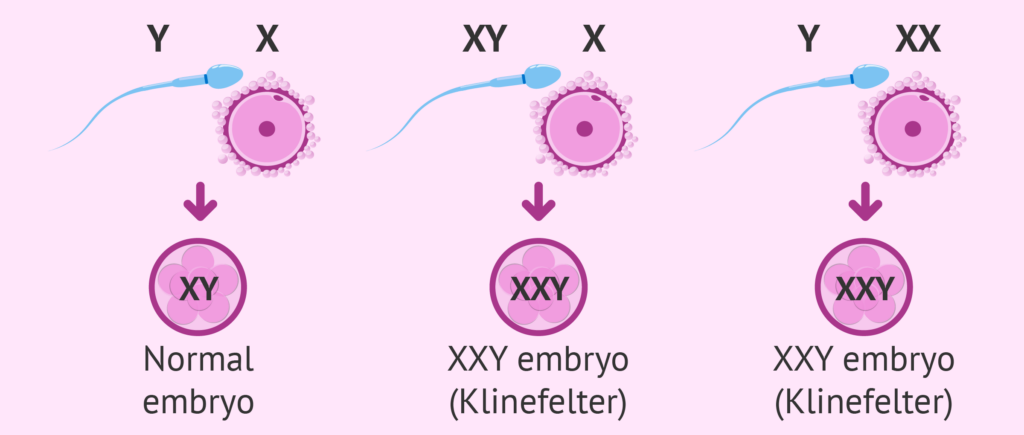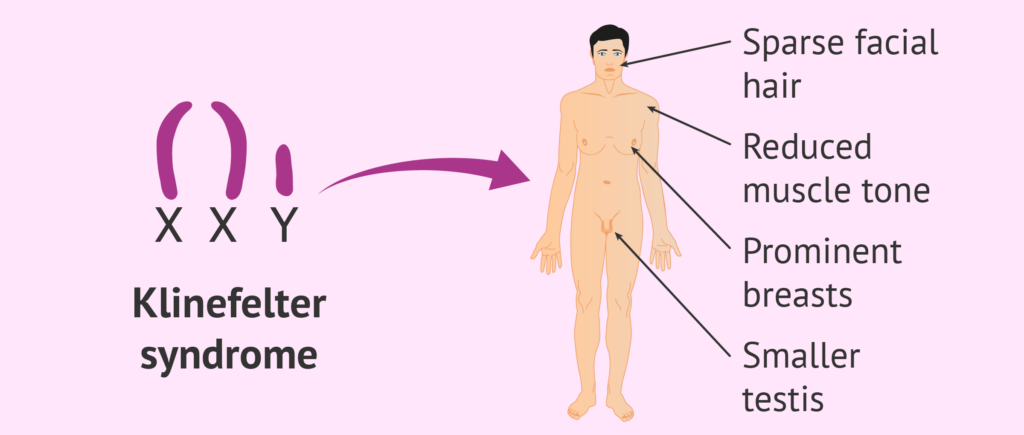Decoding Klinefelter Syndrome and Male Infertility
Klinefelter Syndrome is a genetic condition where there is an extra X chromosome present in the male’s genetic code. In the normal chromosome arrangement, there are 46; however, the individuals with this syndrome have 47. While a typical male has a total of 46 chromosomes, one copy of the X chromosome and one copy of… Read More
Top Doctors For Decoding Klinefelter Syndrome and Male Infertility Treatments
Top Hospitals For Decoding Klinefelter Syndrome and Male Infertility Treatments
Decoding Klinefelter Syndrome and Male Infertility
Klinefelter Syndrome is a genetic condition where there is an extra X chromosome present in the male’s genetic code. In the normal chromosome arrangement, there are 46; however, the individuals with this syndrome have 47. While a typical male has a total of 46 chromosomes, one copy of the X chromosome and one copy of the Y chromosome (46XY), the individuals with Klinefelter syndrome have two copies of the X chromosome and one copy of the Y chromosome (47XXY). This is the basic decoding of Klinefelter Syndromes and male infertility. In some variations of the syndrome, only some of the cells of the individual possess this change, while the other cells have the normal chromosome composition (46XY), or some other chromosomal abnormality. These forms can be referred to as mosaic.

The syndrome is congenital, which means that it develops in the womb. While some tests can be used to diagnose it inside the womb, the majority of diagnoses are done after the birth of the baby. This is done usually at birth when they possess a much smaller-than-expected penis, or it can be during puberty when it does not occur normally. Others are not diagnosed and only get investigated when the individual is having fertility issues. These problems with puberty and infertility are usually because of the inability of the testes to produce enough testosterone and sperm. This results in the individual getting testosterone replacement therapy.
How often does this syndrome occur?
The condition is fairly common, occurring in about 1 in 600 cases. The reality is that many males with it do not realize that they have the condition, till there are instances when it causes a problem, as seen in male infertility.
What is the cause of Klinefelter syndrome?

In this syndrome, the offending extra chromosome usually happens by chance occurrence. The fertilizing sperm or the egg may have the extra chromosome that results in the condition. Older women that get pregnant have a higher chance of giving birth to a boy with an XXY chromosome. The men that have this syndrome usually may possess one of the following factors:
- They may have an extra X chromosome in every cell; this is the most common occurrence
- They may have Mosaic Klinefelter, where there is an extra X chromosome only in some cells and not in others
- They may possess more than one extra X chromosome; however, this is very rare and a more severe case.
What are the symptoms of the syndrome?
The appearance of symptoms, that is, in cases where they do occur is varied. They may appear in some males when they are children. However, most individuals do not become aware that they have this condition until they reach puberty or even adulthood. This is because the symptoms are not always present and they vary with age. The symptoms as seen in different age groups include:
For babies, some of the following may be seen:
- Hernia
- Undescended testicles
- Weaker muscles
- Slower learning is seen in late talking, crawling, or even sitting up
For children:
- Low energy levels
- Problems with reading and writing
- Difficulty in being social
- Low confidence levels
- Hard time making friends
Then, for teenagers:
- Larger than normal fats in the chest area
- Less muscle tone
- Less than normal facial and body hair
- Smaller penis
- Small and firm testicles
- Taller than average for the family
- Longer arms and legs
- Shorter torsos and much wider hips than boys of their age
- Incomplete, later, or complete absence of puberty
For adults:
- Low libido
- Low levels of testosterone
- Issues with erection
- Infertility due to inadequate sperm production
How is Klinefelter syndrome diagnosed?
The start of the diagnostic process is usually a consultation process, where they ask the individual general questions about the symptoms experienced and their general health. This is usually followed by a physical examination by a doctor. The chest, the penis, and the testicles are all examined. The reflexes of the individual are also examined. Further investigations may involve the following:
- Chromosome analysis – This is also referred to as a karyotype analysis. The test aims to properly examine the chromosome of the individual
- Hormonal level analysis – This is done to examine the level of hormone in the blood or urine of the individual
What is the treatment for this syndrome?
The earlier the condition is diagnosed and the treatment started, the better the prognosis. However, the treatment can be started at any time. Hormonal therapy is a very common treatment for the syndrome. It can be started at puberty and can help drive the expected body changes that come with puberty, changes like body hair growth and deepening of the voice. The therapy can also help increase penis size and stronger bone and muscle tone. However, the therapy does nothing about the size of the testicles or the fertility issues. The therapy, when given for life, can help prevent some of the problems that occur later in the life of the individual. Some other treatments may include:
- Speech therapy
- Physical therapy
- Occupational therapy
- Cosmetic surgery to reduce the breast size
- Counseling and mental health support
- Fertility treatments like assisted reproductive techniques and surrogacy as a different resort
What are the possible complications of the syndrome?
The affected males are more likely to develop metabolic syndrome. Some of the issues that may come with the syndrome include high cholesterol, high blood pressure, and diabetes mellitus. In some cases, they may also develop problems like tremors, seizures, cancer of the breast, gynecomastia, lung diseases, problems with their mental health, and autoimmune diseases. These issues are usually prevented by hormonal, speech, and behavioral therapies.

Is it possible to prevent the syndrome?
It is not possible to prevent this condition as it is genetic. It is a random error in the genetic code and it happens before the birth of a person. Furthermore, it is not hereditary, and there are no proven methods to prevent an offspring from getting the syndrome.
What is the prognosis for individuals with this syndrome?
The severity can vary widely in different people. It may be so mild that some people may not even be aware that they have the syndrome. These men only discover it when they are being examined for the cause of their infertility. The treatment of the condition greatly improves the condition of people with the syndrome, helping them achieve a happier and healthier life. While their life expectancy is normal, the complications that arise with the condition may work to shorten this expectancy, however.



































